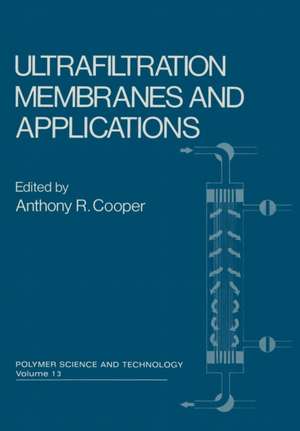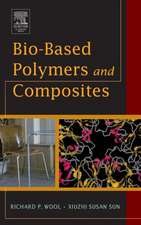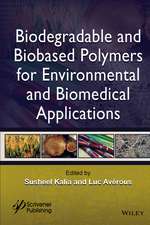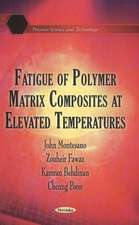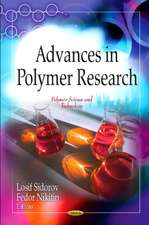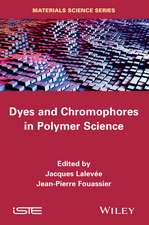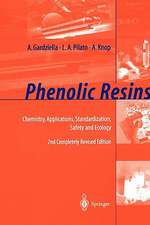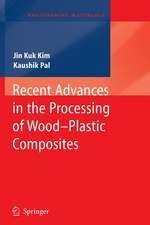Ultrafiltration Membranes and Applications: Polymer Science and Technology Series, cartea 13
Editat de Anthony R. Cooperen Limba Engleză Paperback – 21 noi 2011
Din seria Polymer Science and Technology Series
-
 Preț: 402.38 lei
Preț: 402.38 lei -
 Preț: 402.98 lei
Preț: 402.98 lei - 18%
 Preț: 1402.74 lei
Preț: 1402.74 lei -
 Preț: 394.51 lei
Preț: 394.51 lei -
 Preț: 407.19 lei
Preț: 407.19 lei -
 Preț: 390.63 lei
Preț: 390.63 lei -
 Preț: 403.91 lei
Preț: 403.91 lei - 18%
 Preț: 1240.30 lei
Preț: 1240.30 lei -
 Preț: 387.75 lei
Preț: 387.75 lei -
 Preț: 390.25 lei
Preț: 390.25 lei -
 Preț: 403.15 lei
Preț: 403.15 lei -
 Preț: 393.74 lei
Preț: 393.74 lei -
 Preț: 393.74 lei
Preț: 393.74 lei -
 Preț: 390.63 lei
Preț: 390.63 lei - 18%
 Preț: 1855.26 lei
Preț: 1855.26 lei -
 Preț: 399.67 lei
Preț: 399.67 lei -
 Preț: 400.85 lei
Preț: 400.85 lei -
 Preț: 391.40 lei
Preț: 391.40 lei -
 Preț: 402.56 lei
Preț: 402.56 lei -
 Preț: 404.29 lei
Preț: 404.29 lei -
 Preț: 401.42 lei
Preț: 401.42 lei - 18%
 Preț: 959.04 lei
Preț: 959.04 lei - 18%
 Preț: 959.19 lei
Preț: 959.19 lei - 15%
 Preț: 679.47 lei
Preț: 679.47 lei - 18%
 Preț: 1550.92 lei
Preț: 1550.92 lei -
 Preț: 384.70 lei
Preț: 384.70 lei -
 Preț: 385.62 lei
Preț: 385.62 lei -
 Preț: 411.64 lei
Preț: 411.64 lei - 18%
 Preț: 951.47 lei
Preț: 951.47 lei - 15%
 Preț: 637.59 lei
Preț: 637.59 lei -
 Preț: 403.15 lei
Preț: 403.15 lei - 15%
 Preț: 710.56 lei
Preț: 710.56 lei - 15%
 Preț: 656.89 lei
Preț: 656.89 lei - 18%
 Preț: 1238.42 lei
Preț: 1238.42 lei -
 Preț: 384.70 lei
Preț: 384.70 lei -
 Preț: 403.37 lei
Preț: 403.37 lei -
 Preț: 395.85 lei
Preț: 395.85 lei -
 Preț: 388.34 lei
Preț: 388.34 lei -
 Preț: 396.02 lei
Preț: 396.02 lei
Preț: 666.41 lei
Preț vechi: 784.01 lei
-15% Nou
Puncte Express: 1000
Preț estimativ în valută:
127.54€ • 132.14$ • 106.44£
127.54€ • 132.14$ • 106.44£
Carte tipărită la comandă
Livrare economică 21 martie-04 aprilie
Preluare comenzi: 021 569.72.76
Specificații
ISBN-13: 9781461331643
ISBN-10: 1461331641
Pagini: 728
Ilustrații: XVI, 708 p.
Dimensiuni: 170 x 244 x 38 mm
Greutate: 1.14 kg
Ediția:1980
Editura: Springer Us
Colecția Springer
Seria Polymer Science and Technology Series
Locul publicării:New York, NY, United States
ISBN-10: 1461331641
Pagini: 728
Ilustrații: XVI, 708 p.
Dimensiuni: 170 x 244 x 38 mm
Greutate: 1.14 kg
Ediția:1980
Editura: Springer Us
Colecția Springer
Seria Polymer Science and Technology Series
Locul publicării:New York, NY, United States
Public țintă
ResearchCuprins
I. Fundamentals.- Fifteen Years of Ultrafiltration: Problems and Future Promises of an Adolescent Technology.- Production, Specification, and Some Transport Characteristics of Cellulose Acetate Ultrafiltration Membranes for Aqueous Feed Solutions.- Chemical and Morphological Effects of Solute Diffusion Through Block Copolymer Membranes.- Practical Aspects in the Development of a Polymer Matrix for Ultrafiltration.- Permeability Parameters of a Novel Polyamide Membrane.- Formation of Poly(methyl methacrylate) Membranes Utilizing Stereocomplex Phenomenon.- Advances in Hollow Fiber Ultrafiltration Technology.- Transport Behavior of Asymmetric Polyamide Flat Sheet Membranes and Hollow-Fine Fibers in Dialysis-Osmosis and Hyperfiltration Experiments.- Separation of Macromolecules by Ultrafiltration: Influence of Protein Adsorption, Protein-Protein Interactions, and Concentration Polarization.- Ultrafiltration in an Unstirred Batch Cell.- II. Ultrafiltration Membrane Formation, Characterization and Concentration Polarization.- Morphology of Skinned Membranes: A Rationale from Phase Separation Phenomena.- Characterization Technique of Straight-Through Porous Membrane.- Flow Rates of Solutions Through Ultrafiltration Membranes Monitored by the Structure of Adsorbed Flexible Polymers.- Protein Ultrafiltration: Theory of Membrane Fouling and Its Treatment with Immobilized Proteases.- Boundary Layer Removal in Ultrafiltration.- Initial Time Stirred Protein Ultrafiltration Studies with Partially Permeable Membranes.- Electrophoretic Techniques for Controlling Concentration Polarization in Ultrafiltration.- Prediction of Permeate Fluxes in UF/RO Systems.- Demetallation of Chelating Polymers by Diafiltration in the Presence of a Permeable Complexing Agent.- III. Industrial Applications of Ultrafiltration.- Progress in the Industrial Realizations of Ultrafiltration Processes.- Recent Developments of Membrane Ultrafiltration in the Dairy Industry.- Ultrafiltration of Whole and Skim Milk.- Factors Affecting the Application of Ultrafiltration Membranes in the Dairy Food Industry.- Vegetable Protein Isolates and Concentrates by Ultrafiltration.- Negative Rejections of Cations in the Ultrafiltration of Gelatin and Salt Solutions.- The Application of Ultrafiltration to Fermentation Products.- Concentrating Fruit Juices by Reverse Osmosis.- Surfactant Micelle Enhanced Ultrafiltration.- IV. Industrial Applications of Ultrafiltration.- Thin-Channel Ultrafiltration, Theoretical and Experimental Approaches.- Automated Hollow Fiber Ultrafiltration: Pyrogen Removal and Phage Recovery from Water.- Depyrogenation of Human Chorionic Gonadotropin.- Ultrafiltration of Prothrombin Complex.- Pyrogen Removal by Ultrafiltration — Applications in the Manufacture of Drugs and U.S.P. Purified Water.- High Flux Cellulosic Membranes and Fibers for Hemofiltration.- V. Biomedical Applications of Ultrafiltration.- Microporous Membrane Filtration for Continuous-Flow Plasmapheresis.- Determination of Graetz Solution Constants in the In-Vitro Hemofiltration of Albumin, Plasma, and Blood.- Ultrafiltration in Patients with Endstage Renal Disease.- Development of Novel Semipermeable Tubular Membranes for a Hybrid Artificial Pancreas.- Liver Tumor Cells Grown on Hollow Fiber Capillaries: A Prototype Liver Assist Device.- Application of Ultrafiltration Techniques to the Production of Human Plasma Protein Solutions for Clinical Use.- Ultrafiltration as an Alternative to Reprecipitation and Lyophilization in Cohn Fractionation.- Production of Protein Hydrolyzates inUltrafiltration-Enzyme Reactors.- VI. Ultrafiltration Applications in Environmental Problems.- Ultrafiltration — The Membranes, the Process and Its Application to Organic Molecule Fractionation.- Use of Negatively-Charged Ultrafiltration Membranes.- Electrodialysis and Ultrafiltration as a Combined Process.- A Study of the Fouling Phenomenon During Ultrafiltration of Cottage Cheese Whey.- Ultrafiltration/Activated Sludge System — Development of a Predictive Model.- Hyperfiltration for Recycle of 82°C Textile Water Wash.- Application of Acrylonitrile-Copolymer Membrane to Cationic Electro-Deposit Coating.- The Application of Novel Ultrafiltration Membranes to the Concentration of Proteins and Oil Emulsions.- Using Industrial Membrane Systems to Isolate Oilseed Protein Without an Effluent Waste Stream.- Concluding Remarks.- Contributors.
